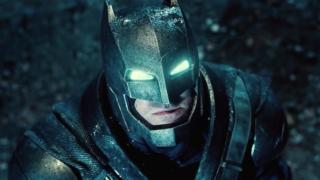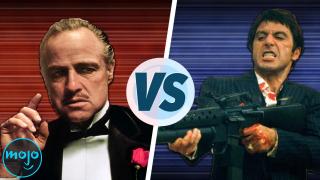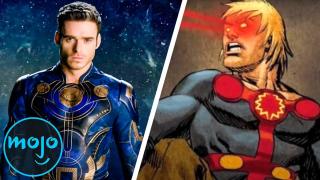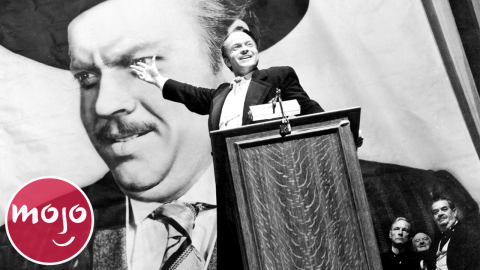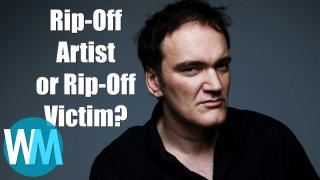Top 10 Movies That Were Released Uncensored
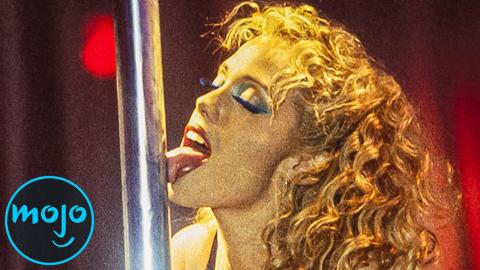
#10: “Dawn of the Dead” (1978)
Top 10 Things We Want To See in Batman V Superman: Dawn of Justice
Often considered one of the best and most influential zombie movies ever made, “Dawn of the Dead” has its fair share of flesh-eating. And it is not pretty. The Motion Picture Association gave the movie an X rating, which was reserved for the most unsuitable films and was the ‘70s equivalent of an NC-17. Even though some big movies were released under the X banner, it was still considered a death blow to box office success, and many studios re-edited their films to attain an R. Romero chose not to do this and didn’t take the X rating. Instead, “Dawn of the Dead” got an unrated release under the United Film Distribution Company.
#9: “Purity” (1916)
We’re going all the way back to 1916 for Rae Berger’s “Purity.” The silent film features Audrey Munson, who is often given the title of “America's first supermodel.” And she appears nude in it. Back then, the Motion Picture Association didn’t exist. Instead, the movie industry was overseen by the National Board of Review. They recommended that ten cuts be made from “Purity,” many of which involved nudity. The results were sporadic, as local film censors chose whether or not to follow the NBR’s guidelines. Some states refused to edit the movie and simply banned it outright. Others ignored the recommendations altogether and released it without any alterations.
#8: “Showgirls” (1995)
Paul Verhoeven’s “Showgirls” isn’t everyone’s cup of tea. It’s quite infamous for its graphic depictions of showgirl culture, and was given the dreaded NC-17 rating as a result. Like the X of old, studios typically re-edit their films to avoid this, as major theaters often won’t carry movies with the rating. “Showgirls” didn’t follow this trend, and was released as is anyway. This was a history-making movie, as no other major Hollywood film had ever gone to theaters nationwide with an NC-17 rating. Funnily enough, it was later censored for home video, with some rental stores like Blockbuster carrying a modified version that was rated R.
#7: “A Clockwork Orange” (1971)
20 Movies That RUINED People's Lives
While it’s now considered a classic, Stanley Kubrick’s “A Clockwork Orange” received many poor reviews and was met with widespread controversy. It was initially released in America in its uncut state with an X rating. However, Kubrick later censored it for re-release, modifying about thirty seconds of the work. The United Kingdom also first saw the movie in its original form. However, distribution was soon stopped altogether after it was thought to have been linked to real-world violence. In other countries, “A Clockwork Orange” wasn’t censored and was banned as a result. This is what happened in Ireland, where the film wasn’t seen for nearly thirty years. It was finally released in its uncensored state there in March 2000.
#6: “A Serbian Film” (2010)
Top 10 Movies So Offensive They Were Banned
There are disturbing movies, and then there’s “A Serbian Film.” A highly notorious piece of work, it has garnered all sorts of negative attention for its perturbing and inappropriate content. Countries including Australia and New Zealand even banned it. “A Serbian Film” also faced difficulty on the festival circuit. It was scheduled to be played at London’s Film Four FrightFest in August 2010, but over four minutes of footage needed to be cut. Deciding against this, the movie was simply not shown at the event. The Raindance Film Festival later showed the full version but advertised the event as “private” in order to circumvent the ban.
#5: “Scarface” (1932)
The Godfather vs Scarface: Who Was The Greatest Mob Boss?
Before Al Pacino and his famous Cuban accent, there was Howard Hawks’ iconic original. “Scarface” was met with widespread condemnation by the censors, who felt that the story promoted criminality. Major changes were required that significantly altered the tone of the film. One of these was a new ending. Most of the adjustments were reluctantly made, but producer Howard Hughes directly battled the powers that be on a few occasions. He screened one version of the movie for the press in New York, despite it having been rejected by the state’s censors, and he later released it with the original ending intact. Hughes also publicly condemned the modified cut, and even challenged various censorship boards legally.
#4: “Eternals” (2021)
Top 10 Most Powerful Eternals
This film contains the first openly gay superhero in the Marvel Cinematic Universe. Played by Brian Tyree Henry, the tech genius Phastos has a husband named Ben. While this type of inclusion was praised in many places, it was the subject of significant contention in others. Various countries, including Saudi Arabia and Oman, banned the film as a result of the same-sex relationship. According to actors Angelina Jolie and Haaz Sleiman, who portrays Ben, Marvel refused to censor the movie for those countries and accepted the bans instead. However, one of the scenes cut for the Indonesian release was a kiss between Phastos and Ben.
#3: “The Birth of a Nation” (1915)
Top 10 Classic Hollywood Movies That Were Controversial Upon Release
This silent drama generated fierce outrage in regards to its racist ideology, alternate portrayal of American history, and horrible imagery. The NAACP and many Black Americans attempted to get the movie banned, believing that it would encourage racial violence. However, review boards typically didn’t listen, and it was neither banned nor censored in most places. In fact, when the film was re-released for a second run, it included a title card that stated, “We do not fear censorship.” Regardless of the controversy, “The Birth of a Nation” did well. It was the highest-grossing movie of its day and was eventually included in the National Film Registry.
#2: “Victim” (1961)
Quentin Tarantino: Rip-Off Artist or Rip-Off Victim?!
This revolutionary film from the early ‘60s defied the era’s conservative views of sexuality. As a result, it faced a lot of trouble with various film censors. The story follows Melville Farr, a lawyer who battles blackmailers targeting gay men. The British Board of Film Censors gave the movie an X rating, even after their recommended edits were made. It was met with similar contempt in the United States, with the Motion Picture Association’s Production Code Administration effectively banning the film. However, the distributor outright defied this ban, claiming that they would release the movie anyway. “Victim” was indeed released on February 5, 1962, when it premiered in New York.
#1: “Schindler's List” (1993)
While regarded as a masterpiece of cinema, “Schindler’s List” was nevertheless met with some controversy - specifically in the Philippines, where the issue went straight to the President. The dispute was over scenes involving intimacy and nudity, with the country’s chief censor demanding about thirty seconds worth of cuts. Director Steven Spielberg vehemently refused to make these changes and insisted that the movie be removed from theaters rather than censored. The premiere was briefly delayed as a result. This all ultimately led to a response from the then President of the Philippines, Fidel Ramos. He defied the censorship board and claimed that anyone 15 and older could watch the film in its full, creatively-intended state.


